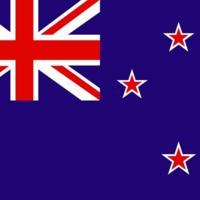Monetary policy affects some parts of the economy differently
Some parts of the economy and prices for some products are more sensitive to a rise in the Official Cash Rate (OCR) than others.
Reserve Bank of New Zealand – Te Pūtea Matua research found that sectors that make or trade goods, as well as housing and real estate related sectors are among the most sensitive to changes in the Official Cash Rate.
“When the OCR increases, these sectors tend to cool more quickly. On the other hand, sectors like primary production including dairy and meat, are less sensitive,“ the Analytical Note authors say.
The research also looked at how monetary policy affects prices across a wide range of domestic goods and services, which do not face as much foreign competition as internationally traded goods.
“We found that prices for accommodation are quite sensitive. So, when the OCR increases, it puts downward pressure on the cost of going on holiday or business,” the authors say.
An OCR increase also has a strong impact on the cost of building a home. This means when the OCR increases, there is relatively more downward pressure on these costs than for prices of other domestic goods and services in the economy. Some services, like household power prices and insurance, are slower to respond to increases in the OCR.
We carried out this research because identifying which parts of the economy are relatively more sensitive to monetary policy allows us to better understand how various parts of the economy may react when interest rates change. It also means we can see more clearly if past policy decisions are working through to the economy as expected.
How are different parts of the economy impacted by OCR changes?
Key findings
- We investigate the sensitivity of output and prices to monetary policy at a disaggregated level, focusing on GDP sectors and CPI non-tradables subgroups in New Zealand. Identifying which parts of the economy are relatively more responsive to monetary policy allows us to better understand how various parts of the economy may evolve in response to policy decisions and to better assess whether past policy decisions are transmitting to the economy as expected.
- For GDP, we find that goods-producing and goods-trading sectors are the most sensitive to monetary policy, while primary production and public services are the least sensitive.
- For CPI non-tradables inflation, we find subgroups such as housing construction costs and accommodation services are more sensitive to monetary policy, while subgroups such as energy and insurance are less sensitive.
- The small sample size leads to greater variation in estimated effects across model variations. As such, this analysis aims to serve as a starting point for further work in this area.
Sectoral heterogeneity in monetary policy passthrough in New Zealand
Why we did this research
Monetary policy may influence sectors of the economy in different ways. Sectoral characteristics—such as capital intensity, reliance on external finance, exposure to competition, and price-setting behaviour—could shape how output responds to policy changes. On the demand side, household preferences and budget constraints may lead to different spending responses across the range of available goods and services. These differences are masked when focusing only on economy-wide indicators like GDP or headline inflation.
Our goal was to provide a baseline analysis of monetary policy transmission at a disaggregated level in New Zealand. This research examines how different output sectors and non-tradables price subgroups respond to monetary policy.
Identifying which areas are more or less responsive can help us better anticipate how the economy might respond to policy changes and assess whether past decisions have had the intended effects.
What data have we used?
The regression models we estimate use official statistics and RBNZ estimates for a range of variables for New Zealand. These are summarised in the table below. Surprise movements in the Official Cash Rate, which are used in the regression models as measures of monetary policy stimulus, are constructed using financial market data.
| Variable | Source |
|---|---|
| Non-tradables CPI (subgroups) | Stats NZ |
| Quarterly GDP (sector level) | Stats NZ |
| Inflation expectations (2-year) | RBNZ survey of expectations (business) |
| Output gap | RBNZ |
| Consumer Price Index | Stats NZ |
| Unemployment rate | Stats NZ |
| New Zealand dollar trade-weighted index (TWI) | RBNZ and NZFMA |
| Trading partners’ GDP (trade weighted index, 16 trading partners) | RBNZ |






















































First, please LoginComment After ~